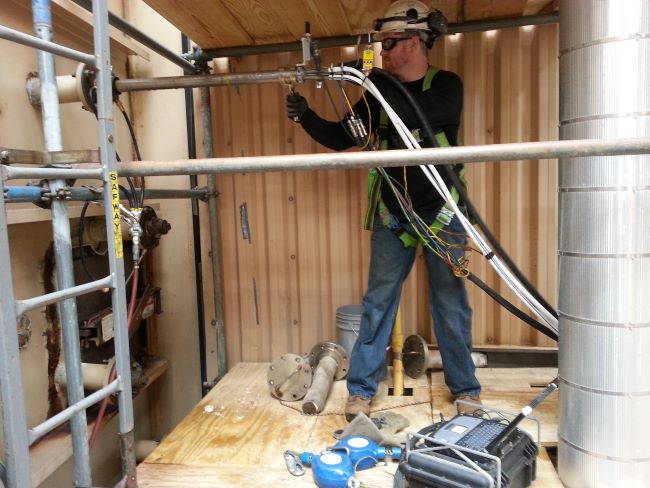Gas Turbine Outlet Flow Testing
By Matthew Gentry

Airflow Sciences Corporation (ASC) had a CFD modeling project in November 2021 that involved optimizing the performance of the pollution control equipment on a gas turbine (GT) power plant. To ensure that the numerical model predictions were as accurate as possible, it was critical that the model boundary conditions were correct.
As part of the project, ASC performed a field test, capturing 3D velocity data downstream of the GT. The conditions at this location were very challenging and required the proper tools. The flue gas downstream of a GT outlet is very hot (>1,000°F) and highly turbulent. A standard stainless steel velocity probe cannot hold up to these challenging conditions, so a specialty probe was used for this test.
ASC has a water-cooled 3D probe which they have used on numerous GT applications in the past. The probe has a larger diameter than a standard probe and connects to the plant service water to supply a constant flow of cooling water while the probe is in the duct. The larger diameter combined with the cooler material temperatures (the probe is cool to the touch throughout a traverse) mean that the probe can withstand the challenging conditions inside the duct.
The water-cooled probe was calibrated in ASC’s EPA-certified wind tunnel prior to the test. In the field, the water-cooled probe was combined with ASC’s 3DDAS (data acquisition system) to collect a full three-dimensional data set at the GT outlet. This flow profile will be used as an inlet boundary condition for the numerical model, ensuring that the recommended design modifications will be tailored to the exact conditions inside the unit.
For gas turbine flow testing or other applications with very high temperatures that require accurate 3D flow measurement, the water-cooled 3D probe has been a great addition to ASC’s testing toolbox.
If you're interested in learning more about Airflow Science's field testing services, contact us here.
Learn more :
